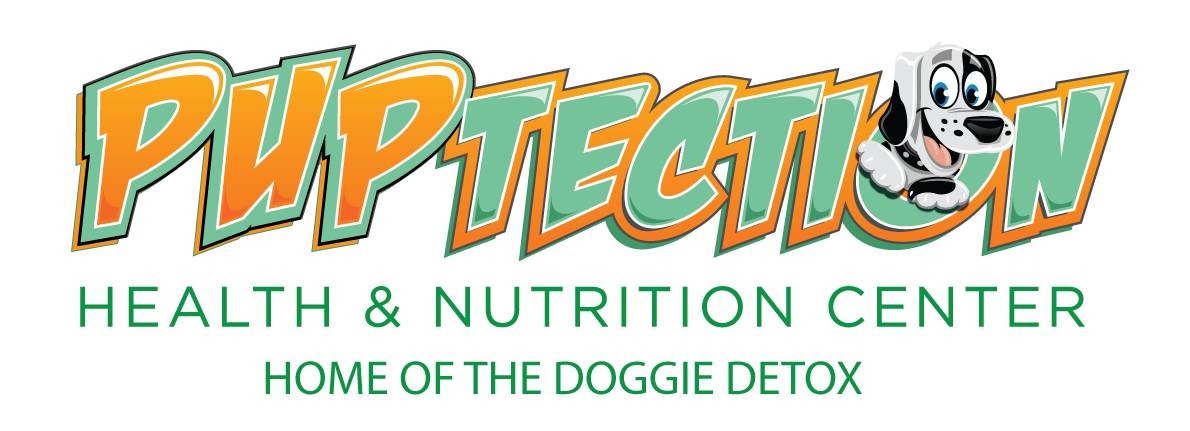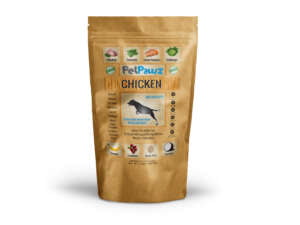

Understanding Dog Food Labels: A Comprehensive Guide for Dog Owners
As a seasoned dog owner, I’ve come to realize that understanding dog food labels is crucial for providing the best nutrition for your pet. Choosing the right dog food isn’t just about grabbing a bag with fancy packaging or a well-known brand. It’s about digging deeper into the label to understand what your dog is really consuming. This guide will help you become an expert at reading dog food labels, enabling you to make informed choices about your dog’s diet.
What Do Dog Food Labels Mean?
The label on your dog’s food provides critical information that can help you determine the quality of the product. To truly understand dog food labels, you need to be familiar with the various sections and what they represent.
Key Components on Dog Food Labels
Dog food labels typically include the following vital sections:
- Ingredients List: This lists all the ingredients in the food in descending order by weight. This means the first few ingredients make up the bulk of the food. Look for high-quality protein sources (like chicken, lamb, or fish) as the primary ingredients, rather than fillers or by-products.
- Guaranteed Analysis: This section provides a breakdown of the food’s nutritional content, including the percentages of protein, fat, fiber, and moisture. It’s a snapshot of the food’s nutrient profile, but you’ll need to delve deeper to get the full picture.
- Feeding Guidelines: These are recommendations on how much to feed your dog, usually based on their weight and activity level. However, these are only guidelines and should be adjusted according to your dog’s specific needs.
Understanding Ingredients: What to Look For
When it comes to the ingredients, quality matters. Whole meat sources should ideally be the first ingredients on the list. Be wary of foods where grains, by-products, or fillers like corn are the primary ingredients. While these may provide calories, they may not offer the optimal nutrition your dog needs.
Guaranteed Analysis: The Basics
The guaranteed analysis provides the minimum percentages of crude protein and fat and the maximum percentages of fiber and moisture in the food. But keep in mind that the guaranteed analysis reflects crude values, meaning the nutrients may not all be digestible. For example, crude protein from a low-quality source like animal by-products may not be as beneficial as protein from whole meat sources.
Considerations Beyond Ingredients
While understanding dog food labels is essential, there are other important factors to consider when selecting the right food for your dog.
Price vs. Quality
Many dog owners are tempted to go for the cheapest option, but cheaper foods often contain lower-quality ingredients, which may not provide the nutrition your dog needs. Lower-quality food may require larger quantities to meet your dog’s nutritional requirements, negating any cost savings. Always calculate the cost per pound or per day to evaluate whether a higher-quality option might actually save you money in the long run.
- Dry vs. Canned Food: Dry food is generally more affordable, especially when bought in larger bags. However, keep in mind that the moisture content is lower, and your dog will need to drink more water alongside it. Canned foods have higher moisture levels, but you’re often paying for the added water weight, so it’s important to consider the nutritional value on a dry matter basis.
Quality vs. Specialty
Not all dogs require specialty diets. Specialty foods, like grain-free or breed-specific formulas, are often marketed to address specific needs, but they may not be necessary for every dog. If you provide a well-balanced diet with high-quality ingredients, your dog may not need a specialized formula.
Converting to Dry Matter Basis: A Critical Comparison Tool
Understanding dog food labels means more than just reading the guaranteed analysis; you also need to convert these percentages to a dry matter basis, especially when comparing dry and canned foods. Moisture content can significantly affect the apparent nutrient levels.
Moisture Content and Its Impact
Canned foods can contain up to 80% moisture, while dry kibble typically contains around 10%. This means that while a canned food might list 5% protein, the actual protein content, after removing the water, could be much higher.
 Understanding Guaranteed Analysis on Dog Food Labels
Understanding Guaranteed Analysis on Dog Food Labels
The guaranteed analysis is often the first thing dog owners check when evaluating food. However, understanding dog food labels requires more than just glancing at these figures; you need to interpret what they really mean for your dog’s nutrition.
Crude vs. Digestible Nutrients
The guaranteed analysis reflects crude protein and fat levels, but these numbers don’t account for the quality or digestibility of these nutrients. For instance, two foods might both list 20% crude protein, but if one derives its protein from high-quality meat and the other from low-quality by-products, the digestibility and nutritional value will differ significantly.
Moisture’s Influence on Guaranteed Analysis
Because canned foods have a higher moisture content, the guaranteed analysis might show lower percentages of protein and fat compared to dry food. However, once you account for the water weight and convert to a dry matter basis, the nutrient levels may be much closer than they first appear.
Real-Life Example: The Importance of Ingredient Quality
An infamous example highlights the pitfalls of relying solely on the guaranteed analysis. A product with a guaranteed analysis of 10% protein, 6.5% fat, and 68% moisture was found to contain ingredients like old leather work boots, used motor oil, and crushed coal. This underscores why it’s essential to look beyond the numbers and examine the quality of the ingredients themselves.
Understanding Dog Food Labels: Guaranteed Analysis, Ingredients, and Feeding Instructions
As a dedicated dog owner, understanding dog food labels is essential to ensure your pet gets the best possible nutrition. By learning how to read and interpret key components like the guaranteed analysis, ingredient lists, and feeding instructions, you can make informed choices about what to feed your dog. Here’s an in-depth guide to help you understand dog food labels and ensure that your furry friend gets high-quality, balanced nutrition.
What is Guaranteed Analysis on Dog Food Labels?
The Guaranteed Analysis on dog food labels provides critical information about the nutrient content of the food. It lists the minimum percentages of crude protein and fat, as well as the maximum percentages of fiber and moisture. But understanding dog food labels requires going beyond the guaranteed analysis numbers to evaluate the actual quality of the nutrients.
Crude vs. Digestible Nutrients
The guaranteed analysis lists crude sources of nutrients, which represent the total amount of each nutrient, but not all of it may be digestible or beneficial to your dog. For example, the protein content may come from lower-quality sources that your dog can’t fully digest or use efficiently.
Moisture Content and Its Impact
Moisture plays a key role in how nutrient percentages are represented. Canned dog food can contain up to 80% moisture, which may make the protein and fat percentages seem lower compared to dry kibble. However, this can be misleading since the actual nutrient density may be higher once you account for the water content.
To make more accurate comparisons between wet and dry foods, converting the percentages to a dry matter basis will give you a clearer picture of the nutrient content.
Dog Food Ingredients: What to Look For
The Ingredients List is another crucial component of understanding dog food labels. Ingredients are listed in descending order by weight, with the first few making up the majority of the food. However, not all ingredients are created equal, and some manufacturers use tactics like ingredient splitting to make lower-quality components seem less prominent.
Common Ingredients and Their Significance
Here’s a breakdown of common ingredients you might find on dog food labels and what they mean:
- Meat: Refers to clean flesh from slaughtered animals, typically the best source of high-quality protein.
- Meat By-products: These are non-meat parts of the animal, such as organs, which can still be nutritious but vary in quality.
- Poultry By-products: These include parts like the head, feet, and organs of birds, excluding feathers. While they offer some nutritional value, they may not be as beneficial as whole poultry meat.
- Fish Meal: Ground fish tissue, which can be a good source of protein and omega-3 fatty acids, though the quality can depend on the type of fish used.
- Ground Corn: A carbohydrate source that’s commonly used as a filler. While it provides energy, it lacks the high-quality nutrients found in other grains.
- Corn Gluten Meal: A by-product of corn that’s often used as a cheap protein source. It’s not as digestible as whole meats.
- Brewers Rice: The small fragments of rice left over from processing, often considered a filler ingredient.
- Brown Rice: Unpolished whole rice, which is a better source of fiber and nutrients than brewers rice.
- Soybean Meal: A by-product of soybean oil production, used as a protein source but not as digestible as animal proteins.
- BHA: A synthetic preservative used to prevent fats from becoming rancid. Some studies suggest that it may have long-term health risks.
- Ethoxyquin: Another chemical preservative that can extend shelf life but has been linked to potential health concerns.
- Tocopherols: These are natural preservatives, typically in the form of Vitamin E, and are a safer option for preserving the food’s freshness.
By examining both the guaranteed analysis and the ingredient list, you can get a much clearer sense of whether the food will meet your dog’s nutritional needs.
AAFCO Standards: What They Mean
Understanding dog food labels also involves knowing about AAFCO (Association of American Feed Control Officials) standards. AAFCO provides nutritional guidelines to help ensure pet foods meet basic dietary requirements.
Nutritional Levels
Labels may state that a product is “formulated to meet AAFCO Dog Food Nutrient Profiles,” meaning the food has been laboratory-tested to meet minimum nutritional levels. However, this doesn’t necessarily guarantee high-quality ingredients or digestibility.
Feeding Trials
If a label says that the product’s nutritional adequacy has been “substantiated by AAFCO feeding trials,” it means that the food was tested on animals to confirm it provides balanced nutrition over time. While this is a good indicator, not all products from the same brand may undergo feeding trials.
While AAFCO standards can help you narrow down options, you should still examine the ingredient list and guaranteed analysis to ensure you’re choosing high-quality food.
Feeding Instructions for Dog Food
The Feeding Instructions on dog food labels offer recommended serving sizes based on your dog’s weight and life stage. However, these instructions are general guidelines and should be adjusted based on your dog’s specific needs.
Factors to Consider When Feeding Your Dog
- Activity Level: Active dogs require more calories than those with a more sedentary lifestyle.
- Metabolism: Each dog has a unique metabolic rate that affects how much food they need.
- Breed and Age: Puppies, adult dogs, and seniors have different nutritional requirements.
- Environmental Factors: Extreme temperatures or stressful situations can increase or decrease your dog’s energy needs.
If your dog seems underweight, frequently hungry, or overweight, you may need to adjust the portion size. Understanding your dog’s specific requirements will help you provide optimal nutrition.
 Putting It All Together: A Holistic Approach to Understanding Dog Food Labels
Putting It All Together: A Holistic Approach to Understanding Dog Food Labels
To truly master the art of understanding dog food labels, you need to look beyond just one aspect of the label. Combining insights from the guaranteed analysis, ingredient list, and AAFCO standards can give you a comprehensive view of the food’s quality.
- Check the Protein Source: Look for whole meats as the first ingredient and avoid foods that rely heavily on by-products or fillers.
- Evaluate the Preservatives: Whenever possible, choose foods preserved with natural ingredients like tocopherols, rather than synthetic chemicals like BHA and Ethoxyquin.
- Converting to Dry Matter Basis: To make fair comparisons between dry and canned foods, convert nutrient percentages to a dry matter basis by removing the moisture content.
Conclusion:
Why Understanding Dog Food Labels is Essential for Your Dog’s Health
As an experienced dog owner, I’ve learned that understanding dog food labels is crucial to ensuring my pets receive the best possible nutrition. While the guaranteed analysis offers a glimpse into the nutrient profile, the real story lies in the quality and digestibility of the ingredients. Additionally, using AAFCO standards and feeding instructions as part of your decision-making process will help you select a food that aligns with your dog’s unique needs.
By taking the time to understand dog food labels, you’re not just feeding your dog—you’re investing in their long-term health and well-being.
How to Make Informed Decisions About Dog Food
As an expert dog owner, I know that understanding dog food labels is the foundation of providing the best nutrition for your pet. Labels can be confusing at first, but with a little practice, you’ll be able to decode them and make informed choices. Remember, the guaranteed analysis is just a starting point. To truly assess the quality of the food, consider the ingredient list, calculate the dry matter basis for comparison, and prioritize high-quality, digestible nutrients.
When it comes to your dog’s health, the extra effort to understand what’s in their food will go a long way. Your dog depends on you to provide the best possible nutrition, and by mastering the art of reading dog food labels, you’re giving them the foundation for a healthy and happy life.
Always Consult Your Veterinarian First
If you have any serious concerns about your pet’s health, it is essential to consult with your veterinarian before taking any action.
Puptection Health & Nutrition Center Disclaimer
The information provided on Puptection Health & Nutrition Center’s website is for general informational purposes only and should not be considered as veterinary advice, diagnosis, or treatment. Always seek the guidance of your veterinarian for any concerns or questions about your pet’s health. Do not ignore or delay seeking professional veterinary advice based on information you have read on this website.


